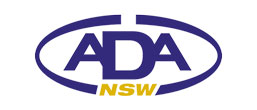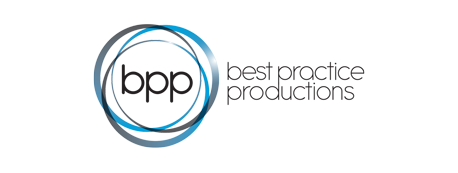FAQ
- What about Breastfeeding?
- This DVD focuses specifically on bottle feeding rather than breastfeeding. In Australia dental professionals recommend the following:
- Breast milk is best for babies and is not associated with an increased risk of dental caries (tooth decay)
- From 6 months of age, infant feeding cups rather than infant feeding bottles are preferred for drinks other than formula or breast milk
- Sugary fluids should not be placed in infant feeding bottles and comfort sucking on a bottle should be discouraged
- Why do children have a general anaesthetic for dental treatment?
- Young children with caries (tooth decay) often cannot sit in a dental chair with their mouths open long enough to allow a dental professional to treat this dental disease effectively. Furthermore, children with dental decay often have several teeth that require treatment. A general anaesthetic allows all this treatment to be completed in one go.
- At what age can a child brush their own teeth?
- Parents and carers need to brush children’s teeth up until about age 8. Allowing a child to begin brushing is useful however an adult should complete brushing all teeth as children up to this age do not have the dexterity to brush correctly.
- When should children start on solids?
- Generally around 6 months. Start slowly and build up to three solid meals per day by about 12 months. As the child begins to eat a wide variety of solids milk becomes less important and by 12 months milk can be given as a drink with or after a meal.
Detailed information on how to start your child on solids is available from early childhood health professionals or your doctor.
- Is 6 months too early drink from a cup?
- From 6 month babies are only learning to drink from a cup. Breastfeeding or bottle feeding will still be the main way they obtain the milk. Drinking from a cup is a gradual learning process however by 12 months an infant should generally be drinking all fluids from a cup.
The process of learning to drink from a cup will require much help and support from parents/carers. Try only very small quantities at first and only little sips. Babies take a while to learn how to manage this new skill. Offer the cup after they have had their bottle, until they are able to drink well from a cup.
Speak to an early childhood health professional or your doctor for more information before beginning to cup feed.
- Why can’t I settle my baby with, or put my baby to sleep with a bottle?
- Babies and toddlers can choke on the contents of the bottle if left in bed with them. Furthermore, when feeding babies to sleep, milk and juice can pool in the mouth particularly around the back teeth, allowing dental decay to occur.
When you routinely settle your baby to sleep with a bottle your baby does not learn to sleep by itself. An association between feeding and sleeping or settling is also likely to form if the baby wakes and becomes reliant on a feed to go back to sleep each time. We suggest feeding your child when it wakes and is hungry, having a play then back to bed when tired to avoid this association with feeding.
- When should I start brushing my child’s teeth?
- When the first tooth erupts.
Use only a soft small child’s toothbrush and brush the surface of the tooth in small circles. This needs only to be a short time, don’t force the issue, brush after day time feeds, and before bed.
To get your baby used to having its teeth and gums brushed, start prior to tooth eruption using a clean damp cloth and wiping around the gums after daytime feeds.
See an oral health professional for information on when to start using fluoride toothpaste.
- When should my child have its first dentist visit?
- Preferably by 12 months. Take your child with you when you go to the dentist yourself so they get comfortable visiting the dental clinic.
- What’s wrong with giving my child packaged foods and drinks when we go out?
- Sticky, sugary and starchy foods should be avoided when out if your child is unable to brush their teeth after eating.
Sticky, sugary, starchy food sticks to the teeth for long periods. Choose foods which can be eaten in one meal rather than those which encourage grazing and snacking over long periods. Grazing and snacking exposes teeth to acid attack.
Finally, drink only water between meals.
- For more information about my child’s oral health
- www.ada.org.au
www.health.nsw.gov.au
INFO for Educators & Carers
Protecting Tiny Teeth is an initiative of the Australian Dental Association (NSW Branch) with support from the Centre for Oral Health Strategy in the NSW Ministry of Health.
- About Protecting Tiny Teeth
- Protecting Tiny Teeth is a digital media resource for parents and carers to educate them about prevention of tooth decay (or early childhood caries) in babies, toddlers and infants.
- About Early Childhood Caries (ECC)
- Early childhood caries (or tooth decay in young children) is on the rise in Australia and is now the most common chronic disease in children. It is also the most common cause why children are hospitalised for a general anaesthetic.
This resource aims to educate parents and carers on the reasons for, and how to avoid, early childhood caries.
Baby teeth are important for both speech development and comfortable eating. Tooth decay is a painful experience for a young child and if baby teeth are lost too early this can create spacing problems later on for adult teeth.
- Audience
- The audience for Protecting Tiny Teeth includes parents, grandparents and other family members of babies, infants and toddlers. It is also suitable for a wide variety of healthcare and childcare workers.
Protecting Tiny Teeth is a powerful educational tool for a variety of settings including:
- Antenatal and postnatal classes
- Early Childhood Centres and mothers groups
- Dental and medical centres, waiting rooms and hospital in house television
- Educational sessions for parents, grandparents and child carers
- Who can obtain the DVD?
- Copies of the DVD can be sent to educators of parents and carers, as well as healthcare and childcare workers and other relevant organisations.
Members of the public can view the DVD at www.protectingtinyteeth.com.au. Physical copies of the DVD are not available to the general public.
- Key Messages
- Protecting Tiny Teeth uses real life scenarios to explain how babies, toddlers and infants develop early childhood caries or tooth decay. Narrated by Dr Karl Kruszelnicki, and using 3D graphics, the audience will learn why it is important to introduce good eating habits from a very early age, how and why tooth decay occurs as well as how fluoride works to fight tooth decay and repair damage to tiny teeth.
The core messages for parents and carers in Protecting Tiny Teeth are:
Babies
- Don’t settle your baby with, or put your baby to sleep with a bottle.
Infants and toddlers
- Only eat 5 times a day (breakfast, morning tea, lunch, afternoon tea and dinner)
- Don’t snack between meals
- Only drink water between meals (preferably tap water if it contains fluoride)
- Brush twice a day with fluoride toothpaste
- What is the “5/2” message?
- A simple, catchy hand gesture- 5/2 is introduced and repeated throughout the DVD.
Five fingers represent the key messages “only eat 5 times a day (breakfast, morning tea, lunch, afternoon tea and dinner), don’t snack between meals, and only drink water between meals (preferably tap water if it contains fluoride).”
Two fingers represents the key message of brushing twice a day with fluoride toothpaste.
Infants and toddlers should only have 5 eating events a day and only drink water between meals (preferably tap water because in Australia it generally contains fluoride). Children should not snack between meals, especially on sugary or starchy foods and drinks.
Putting a baby to bed with a bottle of milk is the most common cause tooth decay in babies and should be discouraged. Using a bottle to soothe or settle a baby should also be discouraged for the same reason. It’s important to get babies into the habit of feeding when they wake up and are hungry.
Separating feeding and sleeping sets up good eating and sleeping habits for a baby right from an early age.
A cup can be gradually introduced to babies from 6 months – but this will require a lot of help and encouragement!
Finally, children’s teeth should be brushed twice a day with fluoride toothpaste using just a smear of toothpaste on the brush (less than the size of a pea).
Once babies and toddlers progress to eating solid meals the 5/2 message will ensure they stay on the right path to good oral health for the rest of their lives.
For more information
- Project Officer

Australian Dental Association (NSW Branch) Ltd
Email: [email protected]- Production Team

Tel: +61 2 84369957
Email: [email protected]- Scriptwriter
- Peter Lloyd King BDS MDS BArts
Email: [email protected]



